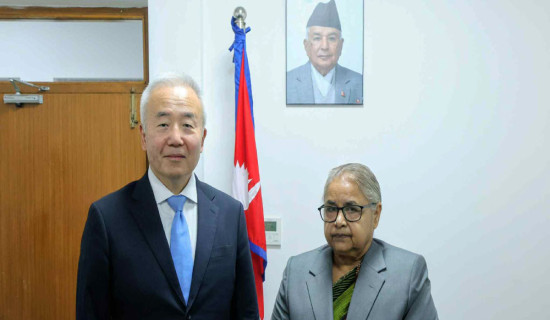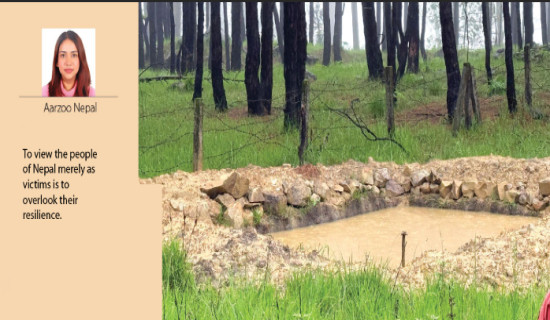- Friday, 5 December 2025
Achieve Sustainable Economic Growth
Fiscal and monetary policies are the two prominent macroeconomic policies that influence the macroeconomic indicators. Horton and Ganainy (2020) define fiscal policy as the use of government spending and taxation to influence the economy. According to them, governments typically use fiscal policy to promote strong and sustainable growth and reduce poverty. In contrast to fiscal policy, monetary policy refers to central bank’s activities that are directed toward influencing the quantity of money and credit in an economy. However, both monetary and fiscal policies are used to regulate economic activity over time. Furthermore, these policies can be used to upscale growth when an economy starts to slow down.
The Finance Minister presented the budget for the fiscal year 2022/23 on 29th May 2022 as a departure budget from import to production, from vulnerability to macroeconomic stability and from exclusion to inclusion. Moreover, with the motive of stability, productiveness and employment growth, inclusive development, self-reliance and economic prosperity, the budget has proposed a number of objectives and priorities.
Expansionary budget
The government announced an expansionary budget of Rs. 1793.8 billion for the current fiscal year 2022-23, with a growth target of 8.0 per cent, and containing inflation within 7 per cent to achieve economic growth and maintain macroeconomic stability. Of the total budget, the government has allocated Rs.753.4 billion (42 per cent), Rs. 381 billion (21.2 per cent), Rs. 230.2 billion (12.8 per cent) and Rs. 429.8 billion (24 per cent) for recurrent expenditure, capital expenditure, financial management and inter-governmental fiscal transfers, respectively. However, the government presented a nearly 10 per cent bigger budget compared to that of the previous fiscal year. It aims to collect Rs. 1240.1 billion (69.1 per cent) thorough taxes, inclusive of both tax revenue and non-tax revenue.
Additionally, it purposes collecting Rs. 55.5 billion (3.1 per cent), Rs. 256.0 billion (14.3 per cent), and Rs. 242.3 billion (13.5 per cent) from foreign grants, domestic debt, and external debt, respectively. The monetary policy for 2022/23 has been formulated in line with the Nepal Rastra Bank Act 2002, keeping in mind the current macroeconomic scenario of the economy, on 22nd of July.
This policy aims to revive the economy from the impact of the pandemic, and maintain macroeconomic and financial stability. However, the central bank has intended to correct the worsening microeconomic indicators such as sluggish economic growth, rising pressures on prices, external sector, depleting foreign exchange reserve, liquidity crisis and an unprecedented impact of COVID-19 on the national economy.
The International Monetary Fund (IMF) and Asian Development Bank (ADB) have projected Nepal’s economy to grow by 4.1 per cent and 3.9 per cent in the current fiscal year, respectively. In addition, the ADB forecasted Nepal’s inflation rates to stand at 6.5 per cent According to the latest report of Nepal Rastra Bank (NRB), the year-on-year inflation reached 8.08 per cent in mid-July 2022 from 4.19 per cent in the previous year. However, it seems, the economy might slow down further due to the Russia-Ukraine war, rising prices of petroleum products and depreciating national currency.
The report shows that the country's outstanding debt and remittances accounted for 41.5 per cent and 20.8 per cent of GDP, respectively. It also illustrates that both the balance of payments and the current account were in deficit. The gross foreign exchange reserves decreased by 13.1 per cent to Rs.1215.8 billion in mid-July 2022 from Rs.1399.0 billion in mid-July 2021. The foreign reserve is sufficient to cover import of goods and services for just 6.9 months.
As the state of the economy seems to be grim due to high inflation, increasing balance of payment deficit, rising prices, public debt, and draining foreign exchange reserve, an efficient and effective coordination between monetary policy and fiscal policy authorities is a must to save the economy. According to the researchers, the main sphere of interaction between monetary policy and fiscal policy relates to the financing of the budget deficit, monetary management and growth.
Way forward
The major objectives of both of the macroeconomic policies are to achieve sustainable economic growth, stable prices and viable external sectors. So, as mentioned above, there should be close coordination between the concerned authorities in order to achieve these objectives. For an economy like Nepal, at times, conflicting objectives like ensuring growth and containing inflation, are set. Both the government budget and monetary policy have been unveiled at a time when the key macroeconomic indicators have been raising the alarm because of COVID-19, Russia-Ukraine war, currency depreciation and issues of good governance, among others.
In order to prevent the possible economic crisis, the responsible authorities should amicably cooperate, and coordinate to resurrect the economy by attracting more foreign direct investment, channelising remittances through formal process, reviving the tourism industry, and promoting domestic production.
(The writer is an Assistant Director at Economic Research Department, NRB. The views expressed are personal and do not reflect those of the central bank. bidhyaman@gmail.com)

















